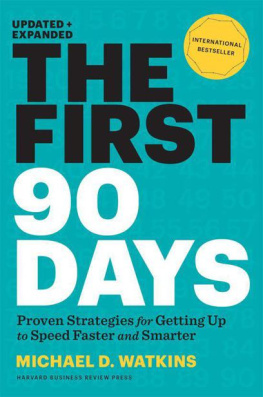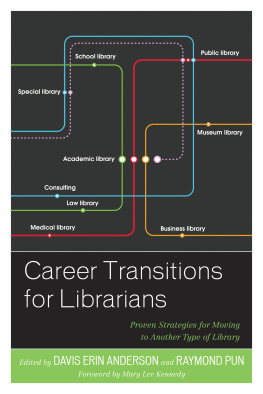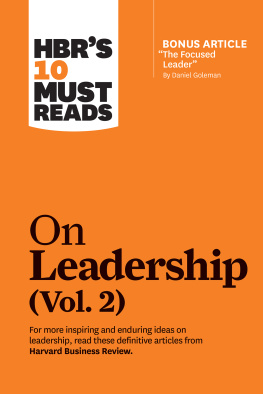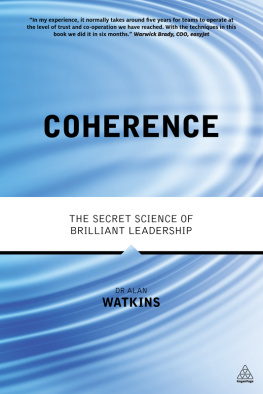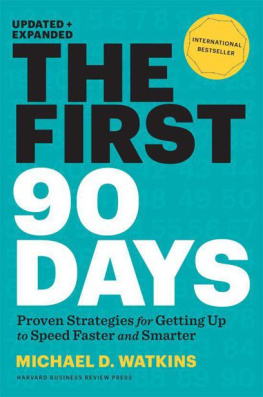
Copyright 2013 Michael D. Watkins
All rights reserved
Printed in the United States of America
10 9 8 7 6 5 4 3 2 1
The First 90 Days, Acceleration Coaching, Rapid Rewire, Transition Roadmap, Transition Risk Assessment, and Transition Heat Map are trademarks of Genesis Advisers.
No part of this publication may be reproduced, stored in or introduced into a retrieval system, or transmitted, in any form, or by any means (electronic, mechanical, photocopying, recording, or otherwise), without the prior permission of the publisher. Requests for permission should be directed to , or mailed to Permissions, Harvard Business School Publishing, 60 Harvard Way, Boston, Massachusetts 02163.
The web addresses referenced in this book were live and correct at the time of the books publication but may be subject to change.
Library of Congress Cataloging-in-Publication Data
Watkins, Michael, 1956
The first 90 days : proven strategies for getting up to speed faster and smarter / Michael Watkins. [Updated and expanded edition].
pages cm
ISBN 978-1-4221-8861-3 (hardback)
1. Leadership. 2. Executive ability. 3. Strategic planning. 4. Management. I. Title. II. Title: First ninety days.
HD57.7.W38 2013
658.4 dc23
2012047185
To Aidan,
Maeve, and Niall
My beautiful children.
M. W.
CONTENTS
Why transitions are critical times. How new leaders can take charge more effectively. Building career transition competence. Assessing transition risk in taking a new role.
Why people fail to make the mental break from their old jobs. Preparing to take charge in a new role. Understanding the challenges of promotion and onboarding. Assessing preferences and vulnerabilities.
Learning as an investment process. Planning to learn. Figuring out the best sources of insight. Using structured methods to accelerate learning.
The dangers of one-best-way thinking. Diagnosing the situation to develop the right strategy. The STARS model of types of transitions. Using the model to analyze portfolios, and lead change.
Building a productive working relationship with a new boss. The five-conversations framework. Defining expectations. Agreeing on a diagnosis of the situation. Figuring out how to work together. Negotiating for resources. Putting together your 90-day plan.
Avoiding common traps. Figuring out A-item priorities. Creating a compelling vision. Building personal credibility. Getting started on improving organizational performance. Plan-then-implement change versus collective learning.
The role of the leader as organizational architect. Identifying the root causes of poor performance. Aligning strategy, structure, systems, skills, and culture.
Inheriting a team and changing it. Managing the tension between short-term and long-term goals. Working team restructuring and organizational architecture issues in parallel. Putting in place new team processes.
The trap of thinking that authority is enough. Identifying whose support is critical. Mapping networks of influence and patterns of deference. Altering perceptions of interests and alternatives.
How leaders get caught in vicious cycles. The three pillars of self-efficacy. Creating and enforcing personal disciplines. Building an advice-and-counsel network.
Why so few companies focus on transition acceleration. The opportunity to institutionalize a common framework. Using the framework to accelerate team development, develop high-potential leaders, integrate acquisitions, and strengthen succession planning.
PREFACE FOR THE 10TH ANNIVERSARY EDITION
What a difference a decade makes. When I set out to write The First 90 Days in 2001, little was out there about getting up to speed in new roles or onboarding new hires (hereafter leadership transitions).
While I appreciated their advice, in the end I decided to push forward to write the book. Leadership transitions were just too interesting and ripe for study; it was virtually an untilled field from both intellectual and practical points of view. Also in late 1999, soon after the publication of Right from the Start, I had been asked by Johnson & Johnsons corporate management development group to develop workshops and coaching processes to accelerate the companys leaders in transition. This work soon evolved into an engaging development partnership, and J&J became a test bed for the development and deployment of my ideas.
The First 90 Days was a distillation of what I had learned during roughly two and a half years of working with hundreds of leaders at the vice president and director levels in all regions of the world. The book built on some foundational ideas developed in Right from the Start; for example the importance of accelerating learning, securing early wins, and creating alliances. However, the ideas had been augmented, tested, modified, and turned into practical frameworks and tools for helping leaders at all levels accelerate their transitions.
It was that distillationthe mix of concepts, tools, cases, and practical advicethat really hit the mark with leaders in transition. I had the wonderful experience of seeing sales of The First 90 Days, which was published in November 2003, take off like a rocket. By the summer of 2004, the book was on the BusinessWeek best-seller list; it stayed there for fifteen months. This success coincided fortuitously with my departure from Harvard and fueled my decision not to seek another academic position. Instead I cofounded a leadership development companyGenesis Advisersdedicated to helping companies accelerate everyone who is taking new roles.
Business books, even highly successful ones, tend to sell strongly for a year or two and then fade. This has not been the case for The First 90 Days. I have had the pleasure of seeing the book sell strongly for a decade, having so far sold almost eight hundred thousand copies in English, including seventy-five thousand in 2011. For the past ten years, the book has consistently remained among Harvard Business Review Presss best-sellers. It has also been translated into twenty-seven languages and was the basis for Leadership Transitions, Harvard Business Publishings award-winning e-learning tool.
Enduring success of this kind has qualified The First 90 Days to be labeled a business classic. The term classic evokes a whiff of mustiness with which I am not entirely comfortable. Nonetheless, I was honored in 2009 to have the book named one of the 100 best business books of all time after an extensive review by Jack Covert and Todd Sattersten at 800-CEO-READ. That recognition was a mark not only of the importance and staying power of the ideas, but also of the continuing need for every new generation of leaders to learn to make successful transitions.
The success of The First 90 Days also fueled and was fueled by a rising wave of interest on the part of companies in talent management, onboarding of new hires, and CEO succession. From the outset, Genesis Advisers work at J&J focused on both accelerating new hires and speeding up internal promotions; I continue to believe that it is a mistake to focus just on onboarding and not on accelerating all transitions. However, it was interest in onboarding that really propelled the field forward, as the war for talent became ever more fierce, and the high costs of derailment, under-performance, and lack of retention of new hires more evident. So many companies began to adopt First 90 Days ideas to accelerate onboarding of new hires. Beyond the work we have done with our clients at Genesis Advisers, First 90 Days concepts and tools have independently been adapted and implemented by learning and development and human resources professionals in thousands of companies. In 2006



